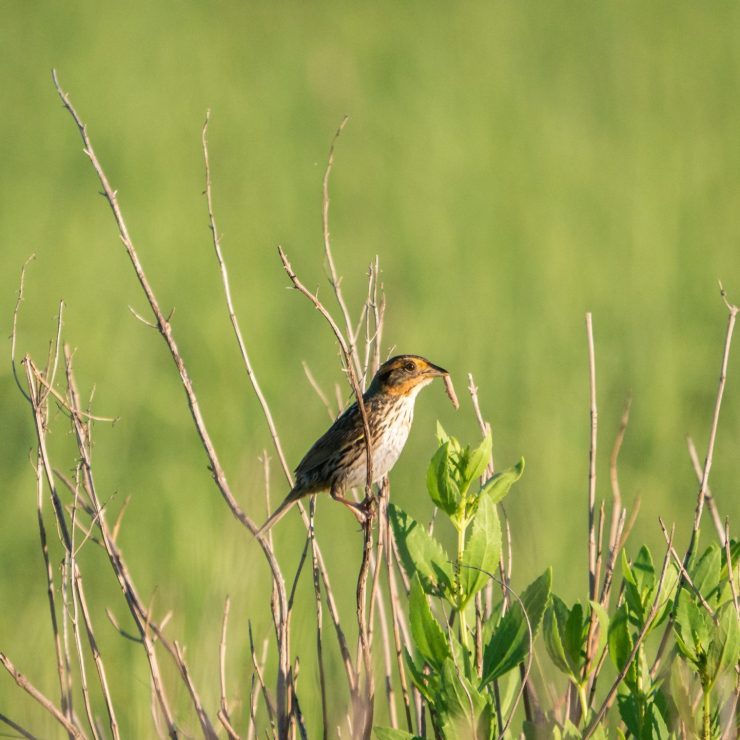By: John Bishop, Jr., PE and Haley Morgan, EIT
Over the last six months, Straughan has been part of a team tasked with designing restoration practices for salt marshes in the Maryland Coastal Bays. What is a salt marsh? According to NOAA, “Salt marshes are coastal wetlands that are flooded and drained by salt water brought in by the tides. Thriving along protected shorelines, they are a common habitat in estuaries. These intertidal habitats are essential for healthy fisheries, coastlines, and communities—and they are an integral part of our economy and culture.” For the Maryland Coastal Bays region, the salt marshes have been impacted by ditching for mosquito control as well as the effects of sea level rising that cause the creation of open waters in a portion of the marsh cells.
A major component to our project was not just the salt marsh restoration itself, but the positive impact this could have for one vulnerable species – the saltmarsh sparrow. The saltmarsh sparrow habitat is found in the high marsh area of the salt marsh, an elevated portion of land that does not flood expect during spring tides or storm surges. Sea level rise and human-made impacts are increasingly reducing this habitat, flooding the high marsh too often and creating pockets of standing water. Prolonged inundation to certain marsh plant species can “drown” them, decreasing plant density, which has negative consequences to the vegetation-sediment interaction of the marsh, reducing sedimentation and pioneer growth. For more information on the saltmarsh sparrow and its declining population, check out this article from the Bay Journal: A Search for the Chesapeake’s Vanishing Saltmarsh Sparrow
Our restoration project has aimed to alleviate pooling and deterioration of the marsh environment at three salt marsh sites and improve the flow of water through the marsh to maintain healthy tidal levels. To inform our design approach, we visited the three sites to assess conditions and evaluate tidal water surface data, survey elevations, and acreage of waterlogged marsh cells for resiliency.
The design team assessed the marsh sites in an approach that broke each site down into smaller marsh cells. This enabled us to evaluate the sites thoroughly and choose design practices in each sub-area catered to specific conditions within that cell. Some of the problems faced were areas of pooled standing water, deteriorating channels through the marsh, and reduced flow distribution across the marsh. To target these issues, the overall design goal was to create a marsh environment resilient to sea-level changes that can support plant growth and fish habitats and maintain healthy water levels by way of effective channelization throughout the marsh. We concluded that there were multiple design practices needed to meet these goals and evaluated which practice to use cell-by-cell.
The final design practices that the team proposed include creating borrow ponds to source fill material on site, filling failing or abandoned ditches, and cleaning out ditches needed for tidal exchange. The main practices consist of either proposing high marsh nourishment to create an area of fill material where permanent pooling exists and thereby promote longevity or secondary platform channels to create runnels that will alleviate pooling and direct flow of water towards existing ditches, which will improve the function of the marsh habitat and promote a healthy marsh environment. The goal of both practices will ultimately be to target areas of failing marsh within each marsh cell.
Overall, across the three sites, Straughan and the design team are proposing to restore over 112 acres of salt marsh. These proposed practices will aim to support local watershed goals of restoring the hydrology and habitat of these marsh environments and in doing so, we can provide the saltmarsh sparrow with a much needed habitat where they can thrive and maybe one day, no longer be at risk of disappearing.
